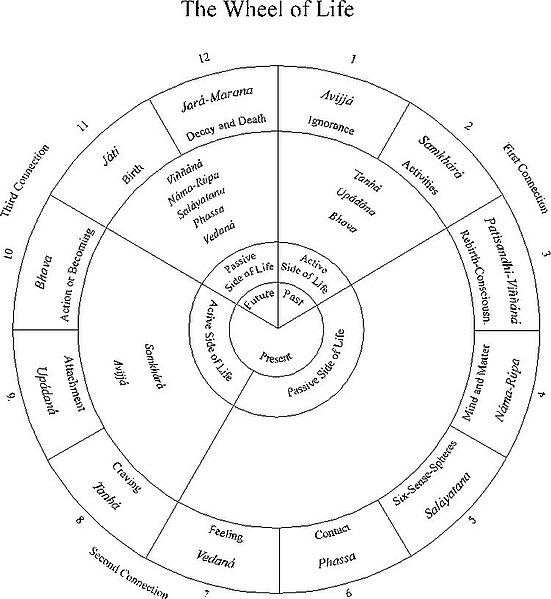The bhavacakra or wheel of life is a visual teaching aid, symbolically representing saṃsāra. It is found on the outside walls of Tibetan Buddhist temples and monasteries in the Indo-Tibetan region, to help non Buddhists understand Buddhist teachings. It is used in Indian Buddhism and Tibetan Buddhism.
A painting of the bhavachakra in Sera Monastery, Tibet
Three poisons
A painting of the bhavacakra from Bhutan.
A painting of the bhavacakra that depicts an emanation of the bodhisattva Avalokiteshvara in each realm.
Pratītyasamutpāda, commonly translated as dependent origination, or dependent arising, is a key doctrine in Buddhism shared by all schools of Buddhism. It states that all dharmas (phenomena) arise in dependence upon other dharmas: "if this exists, that exists; if this ceases to exist, that also ceases to exist". The basic principle is that all things arise in dependence upon other things.
Brick inscribed with the Sutra on Dependent Origination. Found in Gopalpur, Gorakhpur District, Uttar Pradesh. Dated c. 500 CE, Gupta period. Ashmolean Museum.
A circular schema of the 12 nidanas as understood in Theravada Buddhist scholasticism
In Tibetan Buddhism, the 12 nidanas are typically shown on the outer rim of a wheel of existence. This is a common genre of art found in Tibetan temples and monasteries. The three poisons (greed, hatred and delusion) sit at the very center of wheel.







